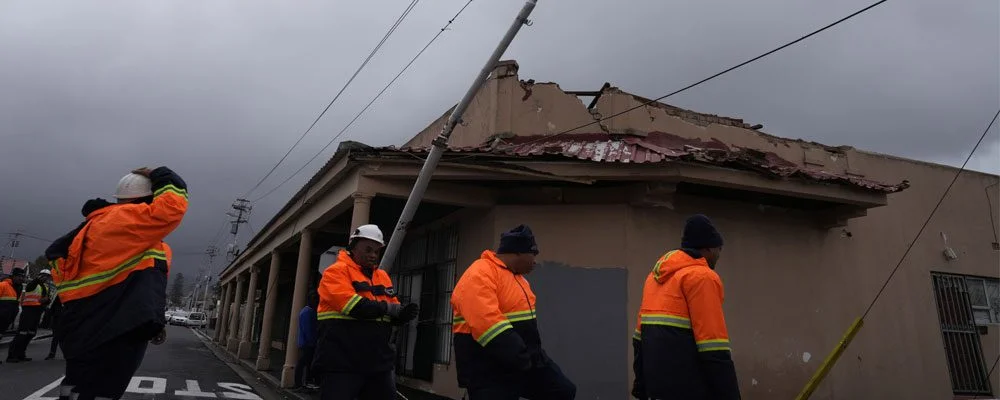On Thursday, July 11, the South African city of Cape Town and its surrounding areas were battered by severe storms, leading to significant damage and widespread flooding. The intense weather displaced at least 4,500 people and damaged around 15,000 structures. This latest round of storms followed a week of destructive weather that began with multiple cold fronts sweeping through the region.
Since late last week, Cape Town has experienced record rainfall and strong winds, with city officials warning that the adverse weather conditions could persist through the weekend and potentially into the following week.
The Wynberg neighborhood was particularly hard hit, with debris scattered everywhere. The powerful winds ripped roofs off homes, destroyed parts of buildings, and knocked down electricity poles, causing further disruption.
In response to the crisis, the City of Cape Town’s Disaster Operations Centre worked tirelessly through the night, addressing calls for assistance from residents affected by the storm. Rescue workers were deployed to help those in need among the damaged structures.
The mayoral committee member for safety and security, JP Smith, reported that city officials and non-governmental organizations had already provided over 36,000 meals and distributed 6,000 blankets to those impacted in just two days.
Many of the displaced individuals are from informal settlements on the outskirts of Cape Town, where makeshift metal and wooden shacks are particularly vulnerable to severe weather events. The impact of the storms has left many families homeless and in urgent need of support.
Schools in Cape Town and the nearby Stellenbosch region, known for its wine production, were closed due to the storms. Earlier in the week, unusual snowfall had blanketed the area as a result of the extreme cold fronts coming in from the Atlantic Ocean.
According to Cape Town Mayor Geordin Hill-Lewis, three major rivers in the province overflowed their banks, exacerbating the flooding. In response, provincial disaster management services ordered evacuations in agricultural areas like Citrusdal and parts of Stellenbosch to protect residents from rising waters.
Authorities are also considering the controlled release of water from several dams as a precaution to prevent overflow and further flooding.
While Cape Town and the southwest coast of South Africa are accustomed to winter storms, the frequency and intensity of these recent cold fronts have been unusual, prompting urgent responses from local governments and emergency services. As the situation unfolds, communities are banding together to provide support and recovery efforts for those affected by this devastating weather.























